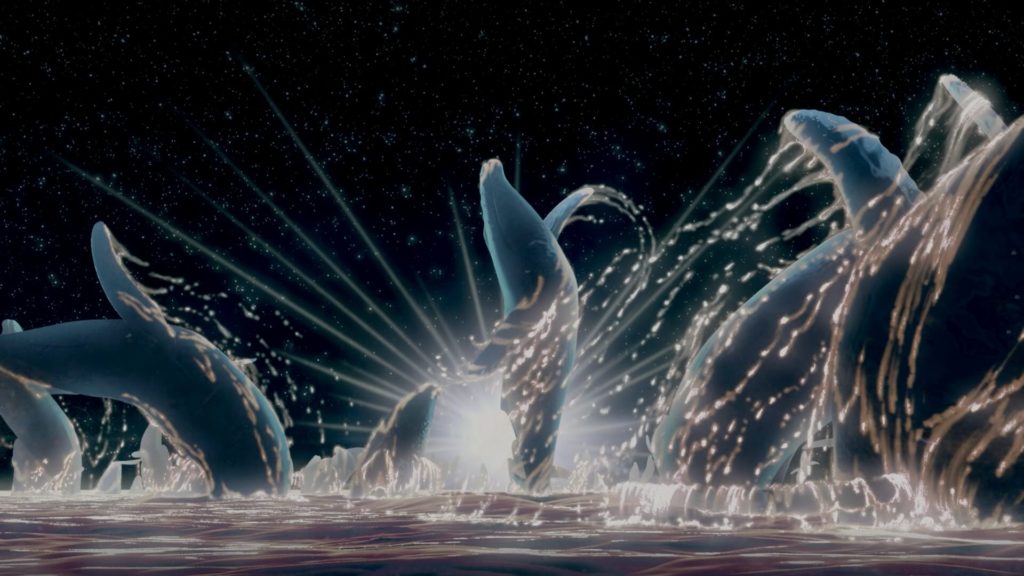
Fantasia 2000 is an update of the 1940 Disney animated feature Fantasia, which Walt Disney had always intended to be an ongoing project with updated segments from time to time. While the original movie was a critical success, it was met mostly by indifference at the box office. Not so with this offering. Fantasia 2000 is the first feature-length film specifically designed to be released in the IMAX format, and in its limited opening around the country the box office has been mobbed. This new film is visually stunning, taking full advantage of the size of the IMAX screen and the sound system that goes along with it. (The movie will be released in regular format in theaters around the country later this year.)
The movie proceeds in a similar fashion as its 1940 predecessor: short, animated stories, each illustrated in a unique style and set to classical music, including Beethoven’s “Symphony No. 5,” George Gershwin’s “Rhapsody in Blue” and Stravinsky’s “Firebird Suite—1919 Version.” Some are more abstract than others, and one (about a flamingo playing with a yo-yo) set to Saint-Saëns’ “Carnival of the Animals” does not stand up to the artistic quality of the rest of the film. But other segments are richly imaginative and stunningly illustrated; the first, about a pod of whales taking flight, and the last, a mini drama of creation, fall and redemption, are particularly good. Only one segment is repeated from the 1940 version: “The Sorcerer’s Apprentice,” in which Mickey Mouse learns a hard lesson about playing with forces he doesn’t understand.
Positive Elements: This film is a great way to introduce children to some terrific music. One segment, set to Shostakovich’s “Piano Concerto #2, Allegro, Opus #102,” retells the Hans Christian Andersen story “The Steadfast Tin Soldier” with its themes of courage and resoluteness in the face of evil. “Rhapsody in Blue” shows four different people persevering to realize their dreams.
Spiritual Content:“The Sorcerer’s Apprentice” features a magician able to summon and manipulate elements such as fire and water. Mickey Mouse gets in trouble when he tries to use this power himself. Another segment retells the story of Noah’s Ark, except that his helpers are Donald and Daisy Duck. The first segment, while illustrated abstractly, is a clear lesson of good triumphing over evil.
Sexual Content: A ballerina in “The Steadfast Tin Solider” gives the soldier a quick kiss on the cheek, but otherwise none.
Violent Content: The tin soldier fights an evil jack-in-the-box, who threatens a pretty ballerina doll and tries to throw him on the fire. This segment might be scary for very young children. A forest sprite fights an evil fire monster in “Firebird Suite.” This segment, too, might be too intense for very young children.
Crude or Profane Language: None.
Drug and Alcohol Content: None.
Other Negative Elements: The last segment, “Firebird Suite,” can be interpreted as a paean to New Age earth worship, in which a fairy sows life in her wake, but it does not necessarily have to be so. Parents can use that segment to teach their children a lesson on hope—the earth seems about to be destroyed by a fire monster at one point—and to show how good triumphs over evil.
Summary: Parents should be aware of a few overtones of New Ageism—nothing overt—in two segments. But along with those come several lessons with clear biblical imagery and tone, and the overall experience is one of wonder and awe.
